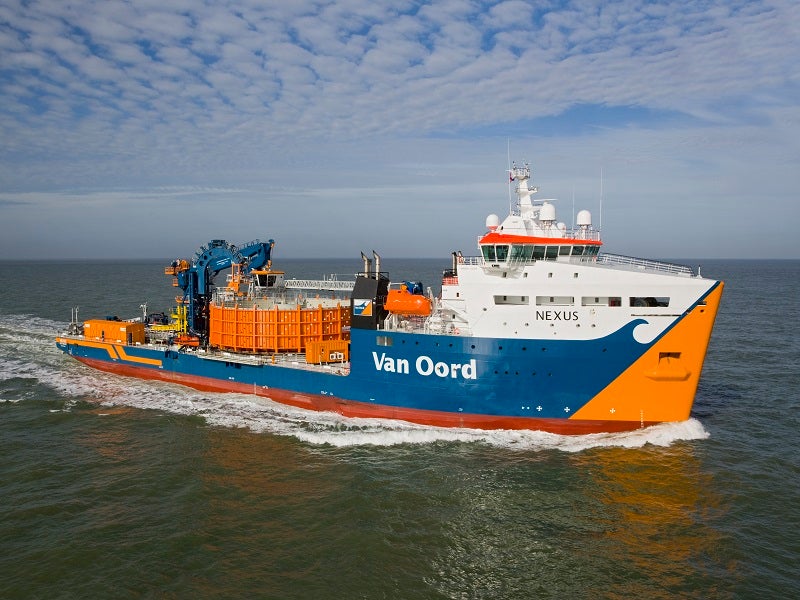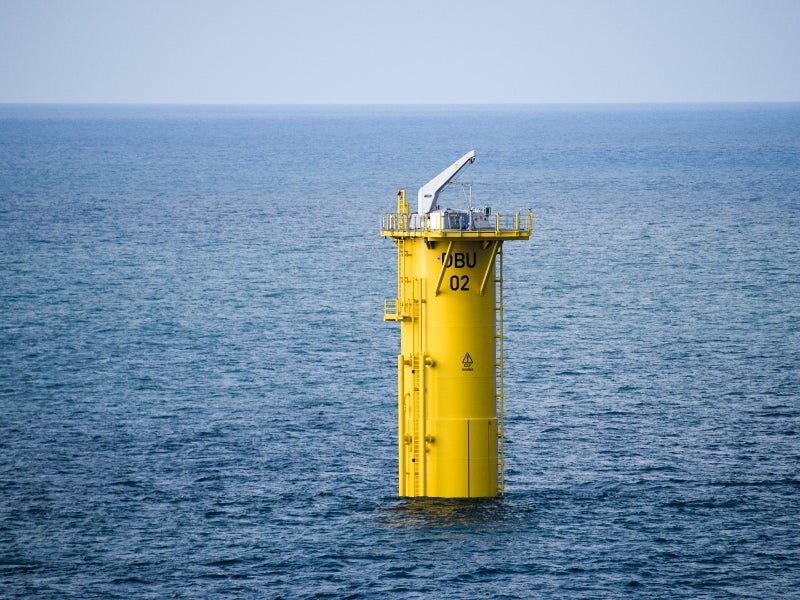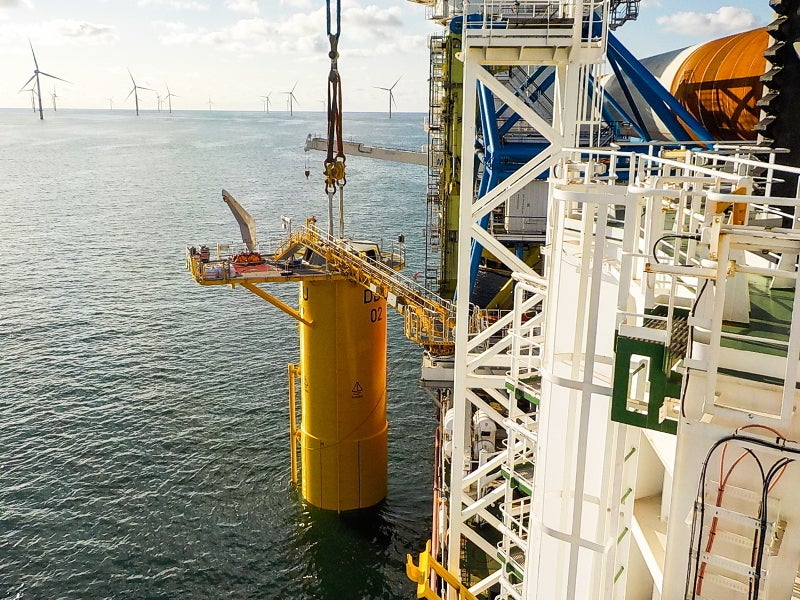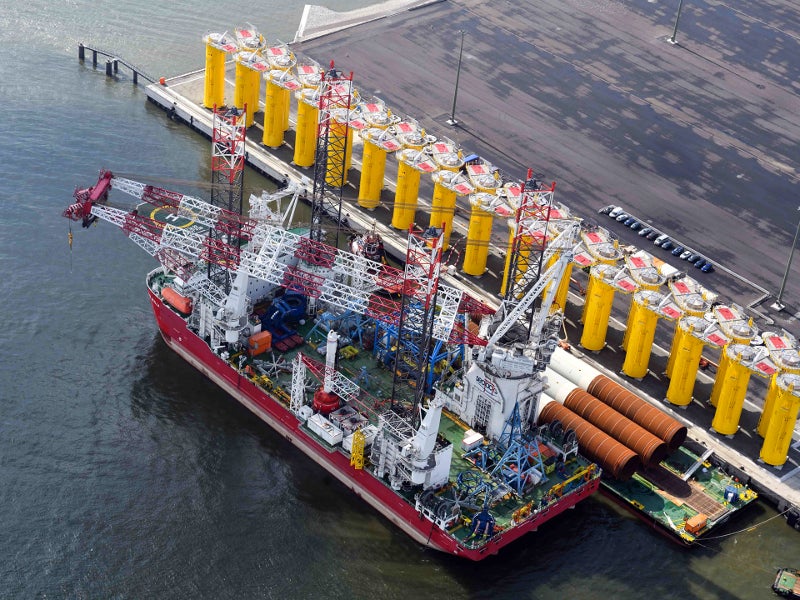The Deutsche Bucht offshore wind farm is located within Germany’s Exclusive Economic Zone (EEZ) in the North Sea. Northland Power, an independent power producer based in Canada, owns the wind farm, which is its third offshore wind project in the North Sea.
With a wind power generating capacity of 252MW, the wind farm produces one billion kilowatt hours of energy a year, which is enough to power 300,000 homes. It also saves approximately 700,000t of carbon dioxide (CO₂) emissions a year.
The installation of steel foundations at the project site began in September 2018, marking the start of construction works. The installation of 31 wind turbines on monopiles was completed in January 2019. The turbines started generating power in September of the same year.
Developed with an investment of €1.5bn ($1.65bn), the project was completed in March 2020, when the operational phase started.
Location
Located 100km away from mainland Germany and 95km north-west of Borkum Island, the wind farm is spread across an area of 22.6km² and has an average water depth of approximately 40m.
The location is 77km away from Northland’s Nordsee One offshore wind project. It experiences strong winds and provides favourable conditions for the project.
Project details
The wind farm is installed with 31 MHI Vestas 8.4MW turbines. Each turbine generator has a rated output of 8.4MW and is fitted with three 80m-long rotor blades.
The wind turbines’ hubs are 100m above the water level, while the height of the monopiles is 78m. The transition piece of each turbine measures 26m long.
The foundations of the wind turbines integrate sturdy 1,100t monopiles with a diameter of 8m at the bottom and 6.5m at the top.
Two of the wind farm’s turbines were planned to be installed on mono bucket foundation structures. The Federal Maritime and Hydrographic Agency of Germany (BSH) approved the installation of these foundations in May 2018. The company, however, cancelled the installation of the mono-bucket foundations in March 2020 due to technical issues.
European transmission system operator TenneT provided the grid connection to the shore.
Deutsche Bucht offshore wind farm substation details
The substation comprises a four-legged jacket foundation. The topside houses the electrical equipment.
The power generated by the wind farm is stepped up from 33kV to 155kV by its own substation and is transmitted to the BorWin beta offshore converter station using medium-voltage cables.
Cables measuring 41km long were laid to connect the turbines to the substation. The cables can carry fibre-optic conductors and withstand corrosion and wear. Conductors relay information between the turbines, substations and control stations.
The offshore converter station is connected to an onshore converter station at Diele through direct-current (DC) cables.
Electricity is converted back at the onshore converter station before being fed into the German power grid.
Financing details
In August 2017, Northland Power secured €988m ($1.1bn) through a non-recourse construction and term loan, as well as other loan facilities arranged by ten international commercial banks, for the wind farm.
Watson Farley & Williams (WFW) advised a consortium of German and international banks and financial institutions on the project’s refinancing in June 2021.
Contractors involved
MHI Vestas, part of Vestas, was contracted to supply the turbines for the Deutsche Bucht offshore wind farm. The company is also responsible for providing operation and maintenance services for a period of 15 years.
ESVAGT received a contract to provide a service operation vessel (SOV) to support MHI Vestas for 15 years in August 2017. The SOV, named Esvagt Albert Betz, was delivered in September 2019.
Marine engineering and construction company Van Oord was responsible for the engineering, procurement, construction and installation of the balance of plant. The company’s scope of work also included transformer substation production and inter-array cables.
Jack-Up Barge, a Dutch company, provided its JB-115 self-elevating jack-up platform for the project.
EEW Special Pipe Constructions (SPC) was responsible for the monopiles production, while a joint venture of Idesa and Windar Renovables provided transition pieces for the turbine poles.
K2 Management was contracted to deliver project management services during the construction phase. The mono buckets were designed by Universal Foundation.
Semco Maritime, an international engineering company, received a five-year service contract for the offshore substation.







